Strong "Chinese style" Transcending Country Borders
Art Exchange VOL.Art Exchange|Gong Jiannan
Museums of 13 Nations Jointly Exhibit the Silk Road——
Strong "Chinese style" Transcending Country Borders
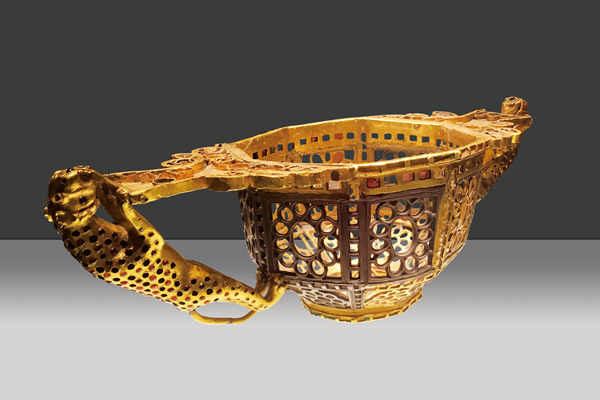
Vessel for Storage, 5th century AD, Collection of the Romanian National History Museum
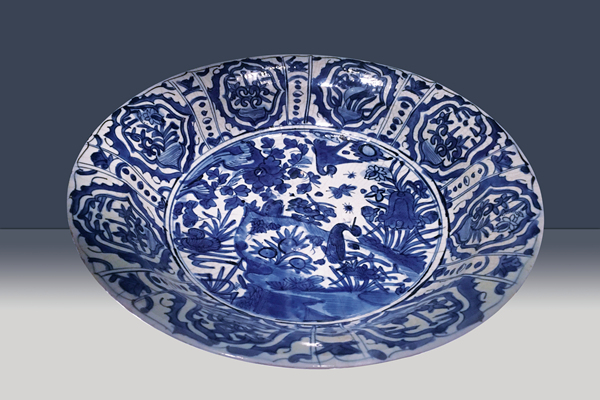
Chinese style Iranian dish , 16th century, Collection of the Polish National Museum
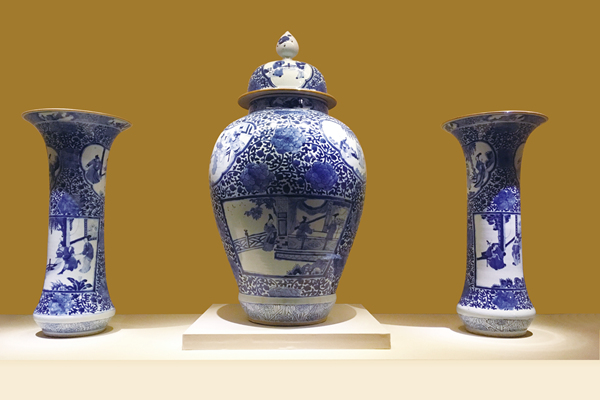
Blue and White Porcelain for Fireplace (1 Set) 18th Century Collection of the Polish National Museum
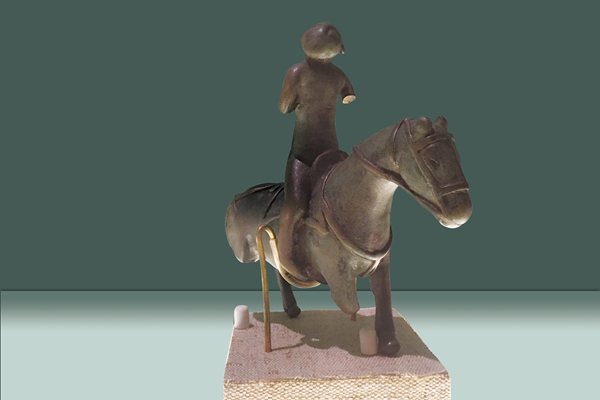
Knight sculpture (bronze),7-9th century AD, Collection of the Russian National History Museum
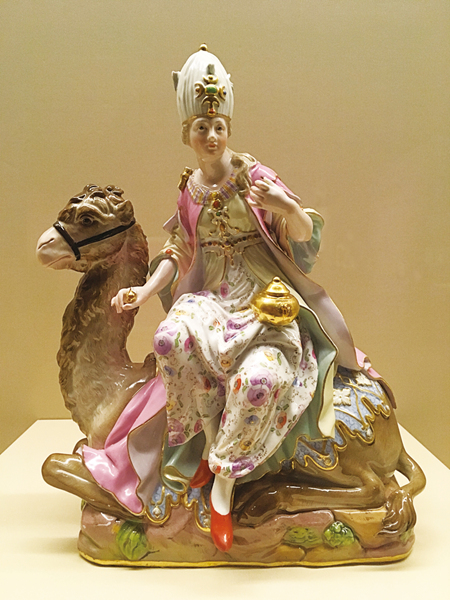
Asian Fables of the World Series (Porcelain) Riga Art Museum of the Latvian National Art Museum
The civilization left by the Silk Road is splendid. The various ethnic groups conveying their own culture in exchanges in history have created rich cultural heritage for the whole world as times passed, echoing that the "Silk Road" is an important bridge for the intersection of civilizations and mutual learning amongst cultures. From April 11th to July 14th, "Sharing a Common Future – Exhibition of Treasures from National Museums along the Silk Road" has been held at the National Museum of China, marking a concrete measure of the exhibition alliance framework agreement signed by the National Museum of China after the "1 stConference of the International Alliance of Museums of the Silk Road" held in November 2018. The exhibition has been jointly organized by the National Museum of China and 12 national museums of Cambodia, Japan, Kazakhstan and other countries along the "Belt and Road", featuring precious cultural relics from 13 museums including the National Museum of China, a total of 234 pieces (sets), a feast of a splendid culture of the world.
The 12 countries along the Silk Road have brought their achievements of civilization across Europe and Asia, to form a brilliant picture that originated from the continuous cultural integration and collision of different countries on the two major plates of the "Land Silk Road" and the "Maritime Silk Road". Wang Chunfa, director of the National Museum of China, said: "The two Silk Roads were gradually formed during the long historical development. The ancient sages, such as Zhang Qian, Ban Chao, Zheng He and Marco Polo, have made important contributions to the development of the cultural corridors. The ancient Silk Road, lasting thousands of miles in distance and two thousand years in time, has formed a Silk Road spirit that transcends time, space and national borders, showcasing eternal charm and contemporary value."
The most stunning highlight of the exhibition is undoubtedly the treasures of cultural relics from various countries, selected on the basis of their regional uniqueness and continuity of Silk Road. According to Yan Zhi, deputy-director of the International Liaison Department of the National Museum of China and the exhibition curator, "the cultural relics on display, reflecting the value of the country in the history of the Silk Road, must have the characteristics of its own civilization, as well as its connection with Chinese civilization and links with other regions along the Silk Road." For example, the influence of the Russian Turbino culture has also existed in Xinjiang, Gansu and Qinghai, reflecting the contribution of the Silk Road at early times. The pre-Angkor period civilization brought by Cambodia can also clearly present the influence of Chinese and Indian cultures: featuring both Indian characteristics and elements of Chinese style in details. The kiln-built cup brought by Japan is a direct reflection of the profound influence of the tea culture of the Song Dynasty on the Japanese tea ceremony. In addition, the Kraak porcelain brought by Latvia and Romania reflects the important course of China's ancient overseas trade. Each country not only demonstrates the uniqueness of its civilization, but also shows their integration with world civilization, which is the most authentic restoration of the spirit of the Silk Road.
It is not difficult to find the admiration of countries along the Silk Road for the Chinese culture in the exhibition hall. We can see that the exhibits brought by the Polish Museum showcase a strong "Chinese style". The Chinese pavilion design and Chinese bridge design drawings in the European courtyard on display, as well as another Chinese-style Iranian porcelain plate, to some extent, reflect local people's fascination with ancient Chinese history and multiculturalism. In addition to showing the relationship between Silk Road countries and China, cultural relics with various national characteristics are also the highlights of this exhibition.
Due to the large timeline, space and geographical span of the exhibits, the exhibition is also carefully designed in layout. The curatorial team emphasizes the characteristics of the "networking" and "banding" of the Silk Road based on color and background, breaking people's thinking about the "ocean" and "desert" concerning the "Maritime Silk Road" and the "Silk Road". The "Silk Road" not only passes through the desert, but also the grasslands and oases in regions of West Asia, and also forests and river valleys when it reaches Europe. As for the "Maritime Silk Road", the ancients need to rely on the ports along the mainland and the known and unknown ports of various countries. The departure from the ports into the Indian Ocean also depends on the monsoon, which is actually the intersection of multiple civilizations. The variety of exhibit categories also symbolizes all the adventures and treasures along the spectacular journey.
In terms of exhibition design, on one hand, as it is necessary to display the rich diversity of multinational cultures, the exhibition sequence, various booths and visual rhythms have been subtlely designed; on the other hand, it is also important to avoid visual "fragmentation" as so many countries and various kinds of cultural relics are gathered in a limited space. The "Silk Road" section employs a dark green exhibition wall, while the deep red is used at the "Maritime Silk Road" section, a clear representation of the two plates.
The theme of the exhibition, "Sharing a Common Future", is committed to letting the people of the world share the light of human civilization. This exhibition of colorful civilizations reflects not only the glorious history of human wisdom, but also the orientation of the National Museum of China in the course of building a community of shared future for mankind with the help of cultural exchanges. Wang Chunfa said: "The poet Wang Weishi of the Tang Dynasty has chanted the sentences of 'Peoples Use DifferentLanguages, But Birds Singing Rhythms of Old Towns'. The exhibition, based on the spirit of the Silk Road, aims at highlighting the integration and mutual learning of artistic and technical aspects of civilizations along the 'Belt and Road' to reveal the fact that building a community of shared future for mankind is the general trend of the future development of the whole world."
Cultural relics have their own languages, and the art with eternal charm will span thousands of mountains and waters and overcome the obstacles of languages to show people the splendor of human civilization. Each of the national cultures presented in the exhibition are so splendid, however, the audiedce will understand this truth at the end of the visit: those civilizations that sublimate into the wisdom of all nations will eventually belong to all mankind. People can now admire the Asian art in European museums, and appreciate the Western art in domestic museums, simply because of cultural integration.
Copyright © 2011 CFLAC Corporation, All Rights Reserved














